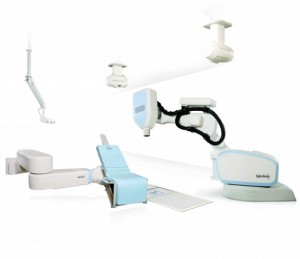Tumors in the lungs, liver, pancreas, kidney, prostate and more, can move as much as two inches with every breath. These movements often occur because of normal breathing or other regular bodily functions, such as the passing of gas or filling of bladder. When treating such tumors with radiation therapy, it can be difficult to accurately target these tumors without damaging surrounding tissue and organs.
There are techniques employed to help to minimize these movements during treatment. Some of these techniques include:
- Breath Holding – There are active techniques to block the airflow temporarily, but oftentimes the patient is required to take a deep breath and hold it for intervals of 20-30 seconds. This technique is simple, but it can be difficult for some patients who cannot hold their breath for that long, especially in repeated intervals. This may be the case for older patients, younger patients, or patients in poor health. Even for patients that are able to hold their breath for that long, there is still no guarantee that they will hold their breath consistently at the right time during treatment. Human error is very plausible.
- Respiratory Gating – Respiratory Gating involves the use of software and image guidance to monitor the movement of the tumor and predict the patient’s breathing cycle. This helps the radiation oncologist to synchronize the delivery of radiation with the patient’s breathing pattern, thus limiting radiation exposure to the tissue and organs near the tumor. For any sudden movements, such as a cough, the treatment systems that use this technique, must be stopped by the radiation therapist.
- Abdominal Compression – This technique relies on an external device to compress the abdomen during treatment to minimize the tumor’s movements. The device itself is uncomfortable for many patients and has been known to cause anxiety for patients during treatment. The device involves a pressure plate which is applied to the abdomen just below the rib cage. The plate’s position is controlled by a scaled screw to help apply the right amount of compression during treatment.
While these techniques can be effective depending on the patient and form of treatment, they can also be problematic and painful for many patients depending on their age, health, and other factors.
Non-Invasive Treatment with CyberKnife

There is another option for patients seeking radiation therapy: the CyberKnife System. Treatment with CyberKnife is completely non-invasive and is able to deliver high doses of radiation with extreme precision from a variety of different angles. CyberKnife is also the only radiotherapy system that is able to track the tumor’s movements during treatment and adjust accordingly in order to minimize exposure to surrounding organs and tissue, without the requirements of breath holding, gating or abdominal compression.
The intelligent and highly advanced software of the CyberKnife combined with image guidance; detects the treatment site, follows the movement, verifies it is on target, and corrects to be on target when it is not, all before each radiation beam is delivered.
Treatment with CyberKnife is completed within 1-5 treatments; it can be used as the primary treatment or in conjunction with other treatments, such as chemotherapy, conventional radiation therapy or surgery. Due to its extreme precision, the CyberKnife was originally developed for treating brain tumors. In 2001 the FDA approved CyberKnife for the treatment of cancerous and noncancerous tumors found throughout the body, including:
- Prostate cancer
- Lung Cancer
- Spinal tumors
- Liver cancer
- Pancreatic cancer
- Head & Neck tumors
- Kidney tumors
- Retreatment of tumors – even with prior radiation history.
- Metastatic cancers/lesions
- And more
If you live in Nevada and have been diagnosed with cancer, contact us at Las Vegas CyberKnife to learn more about treatment with the most advanced radiation therapy system. Our board-certified radiation oncologists are ready to work with you to find the perfect treatment plan for your unique condition.